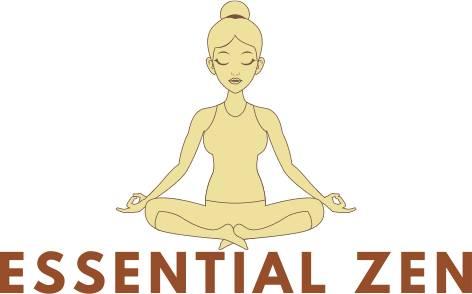Homeopathic products under the Food, Drugs, and Cosmetic law are categorized as drugs. A U.S. FDA Compliance Policy Guide provides specific regulatory guidelines on homeopathic drug commercialisation. Cold symptoms, headaches, and indigestion are examples of self-limiting, self-diagnosable disorders for which OTC homeopathic medicines are suggested. All homeopathic medicinal products must be FDA labelled and produced in conformity with existing Good Manufacturing Practices. Homeopathic product manufacturers should also be registered with the FDA and may be inspected by the FDA. OTC homeopathic producers, like any other medicine, are required to report severe adverse effects to the FDA.
The OTC Drug Review has previously excluded prescription homeopathic medicines from the need for new approval of medicinal products. The homeopathic efficacy, toxicologie, negative impacts and diagnostic and therapeutic use have also been checked by the United States’ Homeopathic Pharmacopoeia Convention (HPCUS) on individual homeopathic ingredients commercialized for sale and are listed (monographed) in the US Homeopathic Pharmacopoeia (HPUS). Compliance with the HPUS is not enough to prove that a homeopathic drug is healthy, reliable, and not mislabeled for its intended use.
Homeopathic Medicine Prescription
In homeopathy, the treatments are tailored to the patient’s individual characteristics, disease cause and all of the symptoms. This approach contrasts from other medical system prescriptions, where prescriptions are principally based on the names of diseases or the principal causal factors. Biomedical doctors would prescribe the same treatment or medication schedule for all patients with the same illness, when they would ask specific questions about the health conditions and ways or factors of each patient, that would improve or worsen them, their likings and misgivings, etc.
Prescription Approaches in Homeopathy
- Acute homeopathic prescription. It requires immediate consideration and quicker action. Acute prescription remedies are meant to boost the body’s interior healing capacity. The therapeutic books usually help to find remedies for acute prescriptions.
- Aetiological Prescription. The selection of the homeopathic remedy has been based on the aetiology or cause, or the ailments. In determining the most similar solution in any emergency, acute or chronic case, the cause of the illness is very crucial. Therefore, the cause must be given credibility before selection of the remedy is important. Cause is one of the elements of the symptoms that are very beneficial in the remedial diagnosis when strong and genuine.
- Keynote Prescription. There are some who prescribe situations with huge achievement on the basis of one or two keynotes. This can only be achieved if the experienced doctor can identify those few main notes which the patient as a whole represents and can and choose the same treatment. The prescription can be scientific, artistic, or intuitive depending on the caliber and reliability of the doctor.
- Synthetic Prescription. Naturally there are many mineral treatments as salts. Nat. Mur is a synthetic form of sodium and chloride; Nat Mur is already a proven solution. However, some doctors prefer to prescribe a synthetic prescription in cases with the Symptoms of two mineral treatments. For instance, if an event looks like Cal Carb and Phos, Calcarea Phosphorica is a synthetic shape of both.
- Tautopathic Prescriptions. Some treatments are made from medicines or chemicals called tautopathic medicines. If someone has never done right since taking this medication or has been addicted and is struggling to get out of it, that particular medication can be prescribed in homoeopathic (tautopathic) form.
- Palliative Prescription. The physician aims at ensuring discomfort, less discomfort and relief from the suffering of the patient in terminally ill patients. Homeopathy is effective in this respect without side effects. In some cases, palliation is a necessary tool for prescription, in all situations of extreme pain or urgency, not only in terminal diseases.
- Prescription for organopathy. The Paracelsus principle is that the given drugs affect organ (parts), by self-election, prescriptions for Oraganopathic drugs. Many doctors have recognized the role and usefulness of the choice of organopathic remedies in the absence or rarest of other guiding symptoms, causes and miasma.
- Pathological Prescription. Pathological recruitment is based on the similitude with or pathological changes in the disease process. Low potencies for serious pathological conditions such as cancer are usually effective in repeat doses.
The fundamental goal is to find out by his skill, knowledge and observations, a patient’s closest likeness to all symptoms interpreted by the physician. In other cases, the doctor may have to take full-scale case history for total. In some cases, you may have an indication that the minimum has one or two symptoms. In these cases, the doctor can evaluate the miasmatic background, past history, etc, to obtain a more accurate prescription even if the doctor cannot arrive at a similar medicine. These are the creative factors of homeopathic case studies.
More About the Authors
Essential Zen focuses on Homeopathy, which is a medical system based on the belief that the body can cure itself. Those who practice it use tiny amounts of natural substances, like plants and minerals to stimulate the healing process. It was developed in the late 1700s in Germany and is becoming more popular in the United States. Our mission is to increase that popularity and help it continue to grow.
We really appreciate all the help of the most affordable cbd online business. If you’re looking for an alternative to pharmaceutical drugs, Mary Jane’s is the place. They offer our customers quality-made CBD products that are sure to be of interest. Their team is passionate about spreading health and wellness by making CBD accessible to all who seek it. Get in touch with them today if you want something different than what your doctor can provide!

